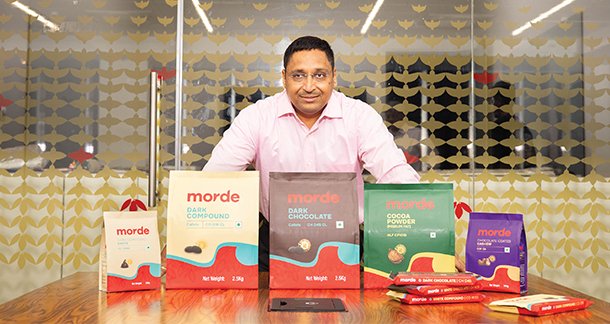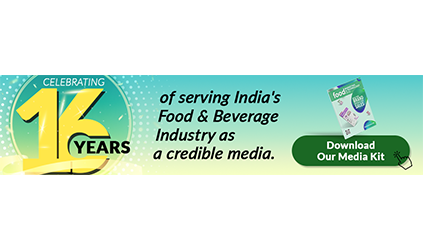In conversation with Harshal Morde, Director, Sales and Marketing, Morde, he discusses the processes in which Morde continues to develop the brand, their trajectory, plans, and more.
What inspired you to rebrand Morde? What was the primary ethos behind it, considering the brand is well established in the market?
Morde has been in the market since 1983, for more than four decades. The thought to rebrand Morde has been on the company’s list for some time.
In the new age, the first interaction of any customer is with the brand identity. This comes alive through a logo, a visual identity, your packaging, and other forms of content. The logo enables the impression of any brand within fraction of seconds to a customer. We felt that a lot has changed in the last one or two decades, which is why we should look and meet the aspirational values of our customers.
If you look at our identity, it is young enough to meet the needs of the young generation in future. So, these were the primary beliefs behind the decision to redefine the company’s identity.
As a B2B chocolate manufacturer, how do you stay consistent in quality and price management amidst high competition and rising cocoa prices in the market?
Quality is a function of the processes we have established for incoming materials and manufacturing. We continuously review and refine these processes, always striving for excellence. Every year, we implement improvements to enhance quality further. Vendor development plays a crucial role in this, as we work closely with our suppliers to uphold and improve standards.
Price management has been an ongoing challenge in recent years. In any manufacturing business, fluctuations in commodity prices are inevitable. To navigate this, it is essential to stay informed about raw material trends and take calculated risks to mitigate the impact of unpredictable price revisions. We have successfully managed this over the years, though occasional extreme fluctuations require a cautious approach. When faced with such situations, we carefully evaluate whether to absorb the costs or pass them on to our customers.

A balanced approach to quality control, strategic pricing, and market awareness enables us to achieve the right price while remaining competitive.
How do you adapt to the needs of different consumers with varying company sizes and product requirements?
We begin by classifying companies based on their size and specific needs, gaining a deep understanding of their product cycles. By analyzing these cycles, we identify emerging trends and anticipate their future requirements. Offering the right products at the right time is crucial in building strong business relationships.
Additionally, our well-developed manufacturing capabilities enable us to scale efficiently while remaining agile. Beyond manufacturing, our robust supply chain ensures that we can meet customer demands seamlessly. This combination of foresight, adaptability, and operational strength allows us to effectively serve businesses of various sizes and their diverse product requirements.
Last year, the confectionery industry was halted by the cocoa crisis. What are some of the repurcussions that Morde had to face? Looking forward, what have you learned during the aftermath of this crisis and how do you prepare yourself to stay alert in the face of unexpected changes in the Industry?
The recent cocoa crisis has been unprecedented for decades, causing significant disruptions across various business elements, including inventory and working capital cycles. Both our company and other chocolate manufacturers have been impacted by the sudden surge in cocoa prices.
At the same time, our customers were caught off guard. To protect their businesses, they had to make swift decisions, resulting in a substantial demand disruption within the chocolate industry.
With such a sharp rise in costs, many have been searching for alternatives. However, chocolate has no true substitutes, making it challenging for businesses to adapt.
To navigate this situation, companies have taken different approaches—whether through recipe modifications, product adjustments, or changes in their offerings. These shifts have directly impacted the product mix we provide.
The key takeaway from this crisis is the importance of agility and proactive risk management. Businesses must remain vigilant and adaptable to minimize disruptions and stay ahead in an unpredictable market.

What are some of the trends do you forsee in the market in 2025 and where do you see Morde Positioning themselves within that framework?
The trends we’ve observed in the chocolate industry are set to continue. Chocolate has become an integral part of many food habits, and with the rise of social media and digital proliferation, its use in impulse and indulgence products is only expected to grow.
Additionally, chocolate adds excitement to adjacent product categories, making it a key ingredient in various FMCG offerings. As a result, its presence in new product formulations will expand.
However, there is increasing attention on making chocolate healthier. Consumers are actively seeking options with reduced sugar, sugar alternatives, or no added sugar. There is also growing interest in vegan, organic, and high-cocoa-content chocolates that offer a refined and balanced flavor profile.
These evolving consumer preferences will continue to shape the industry in the coming years, driving innovation and new product developments.
What advice do you have for start ups venturing into the chocolate manufacturing business?
The B2B manufacturing sector has become highly capital-intensive. Any new entrant in this space must carve out a niche—whether through product innovation or targeting a specific consumer market. Establishing a dedicated customer base and securing market share are crucial for long-term sustainability and business continuity.
This strategic focus is essential for success, and my advice to anyone entering the B2B sector would be to prioritize differentiation and market positioning from the outset.



